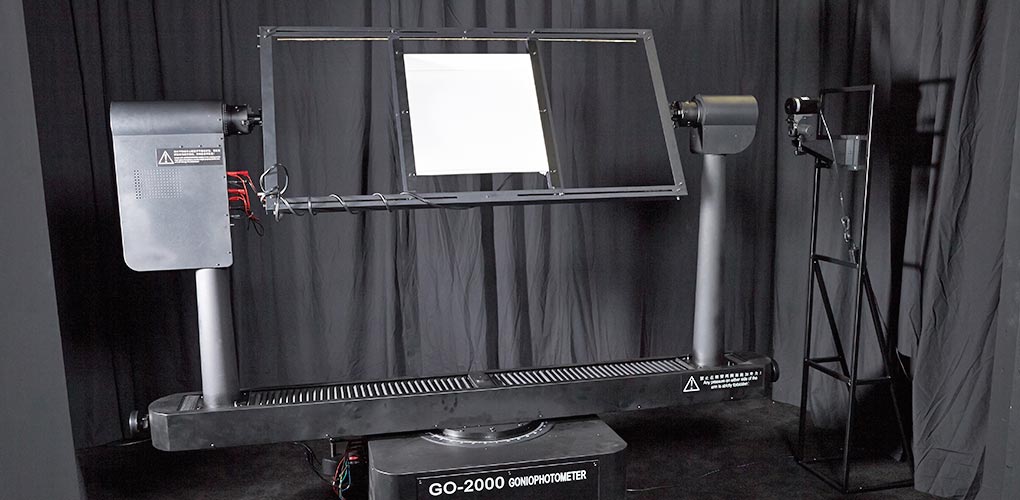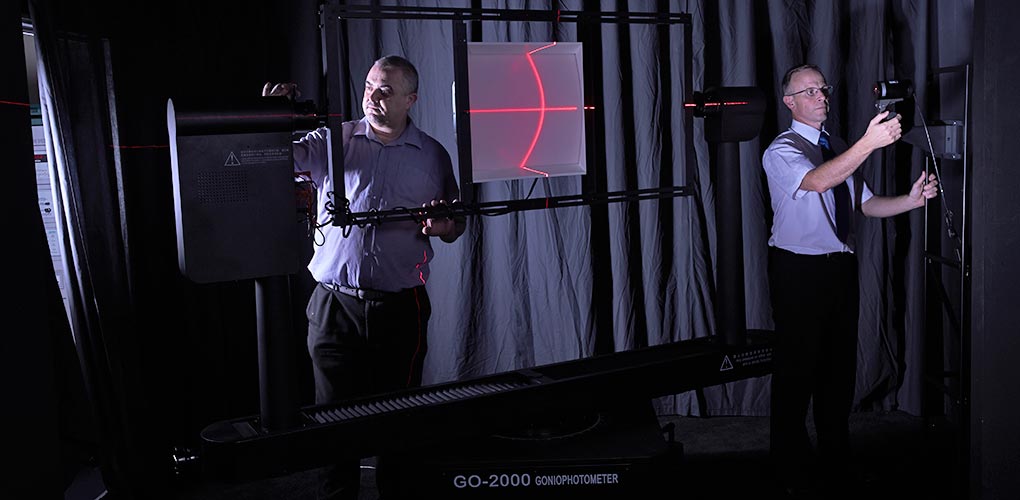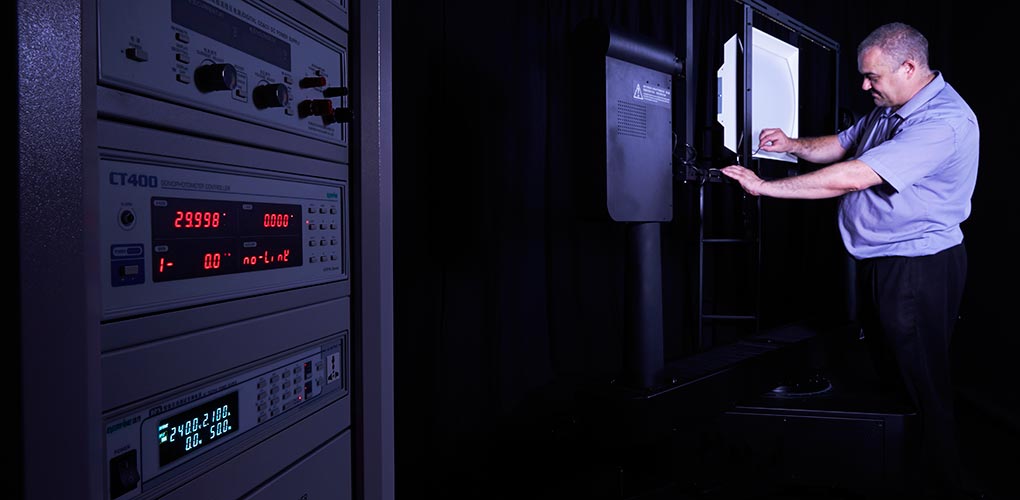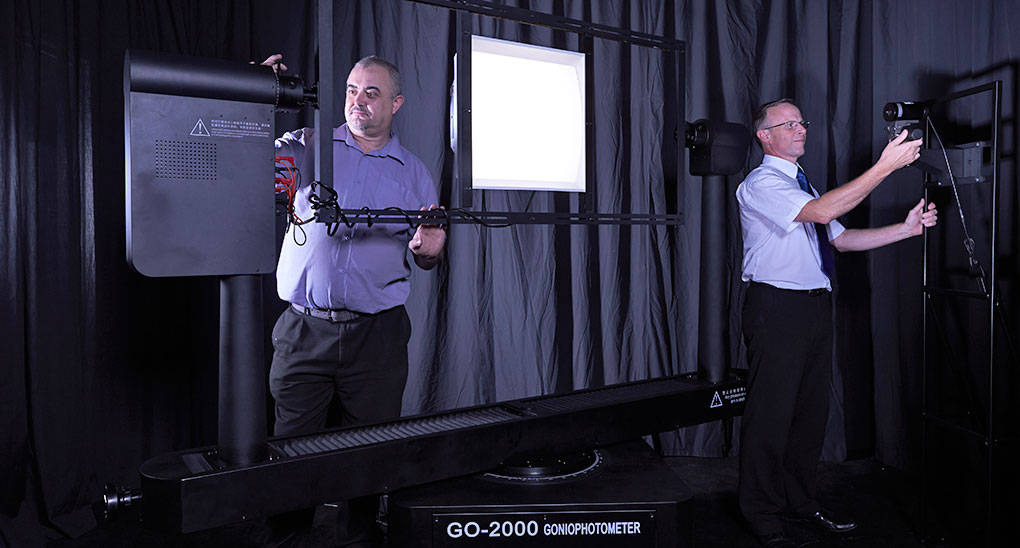


Precision goniophotometer
The GO-2000 Goniophotometer is an exciting addition to our already extensive laboratory facilities. The goniophotometer opens up our testing and manufacturing capabilities even further.
The GO-2000 is faster and even more accurate than its predecessor. It also increases the scope of products that we can test in-house. This includes LED luminaires and street lighting.
A luminaire is mounted to the goniophotometer and taken through a computer controlled set sequence of measuring angles (elevation and azimuth). This measures the angular distribution of light in order to produce polar curves in conjunction with tests undertaken by our integrator.
Previously, our testing range was fixed to increments of 5° elevation and 15° azimuth. We are now able to test to 0.5° elevation and 5° azimuth!
Laser precision goniophotometer
The goniophotometer is equipped with not one but two lasers! The first, fixed, laser is used to centre the luminaire on the rig.
The second laser is used to align the photocell with the goniophotometer. The photocell is sited 8.2 metres away from the product being tested. This is down a tunnel shielded by black baffles. A 10mm diameter mirror can be utilised. This mirror bounces light back from the sensor to the photometer. The mirror effectively gives a testing distance of 16.4 metres.

Power analyser equipment
The power analyser equipment included with the GO-2000 goniophotometer can provide wattage, power factor, voltage and milliamp details. It also displays VA figures.
The goniophotometer is able to run at either 240 volts AC mains power at 5 amps or up to 60 volts DC power at 5 amps.
Goniophotometer software and test results
The software driving the GO-2000 goniophotometer gives faster scan times (typically half an hour). It enables the polar curve to be viewed in real time as it is being built up. We are now also able to measure lumen outputs direct from the goniophotometer rig.
All measurements are made in accordance with EN 13032. Test results are output in full in PDF format. LDT (ELUMDAT), IES and TM14 files are also produced.
